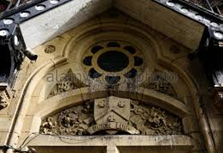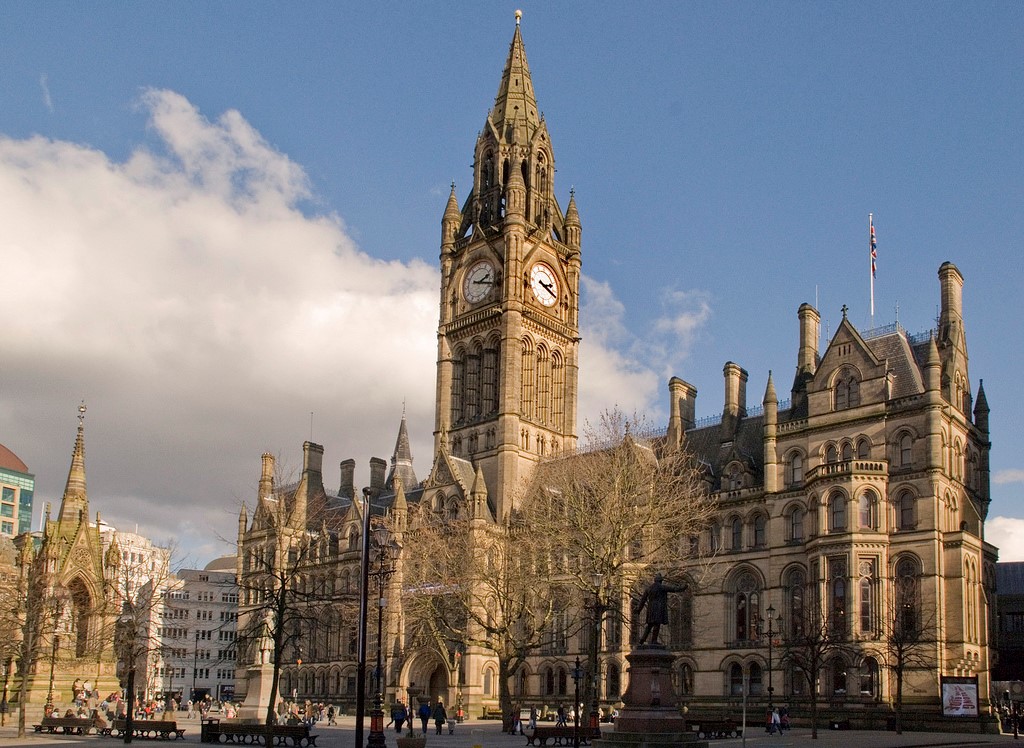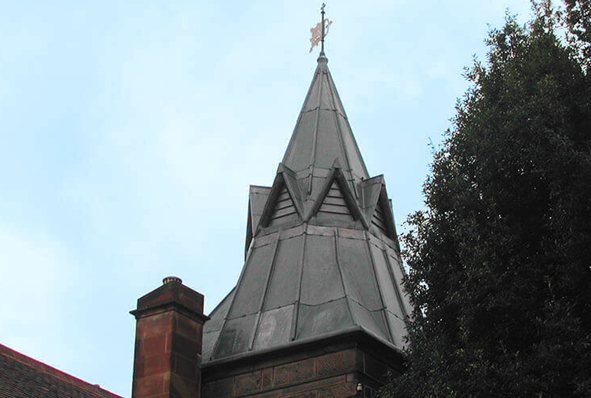Heritage Roofing
Heritage roofing - maintaining our iconic buildings
The UK is home to some of the most iconic buildings in the world, from stunning churches and cathedrals to historic stately homes. Each and every one of these remarkable feats of architecture requires regular maintenance to ensure they remain in the very best condition, allowing them to be enjoyed for generations.
Cathedral Care
Restoration and upkeep of cathedrals
There are some 42 Anglican cathedrals in the UK, not to mention 20 or so Catholic cathedrals. Cathedrals form the most important collection of historic buildings in England. The largest and most ancient are internationally famous, the smallest are usually among the most significant buildings in their region and even the most recent are architectural masterpieces.
Master Craftsmen
Championing our heritage with modern craftsmanship
Twenty years ago, English Heritage (now Historic England) published its first-ever Register of Buildings at Risk across England, which featured nearly 2,000 buildings and monuments that were ‘neglected, broken and unloved’. Recently Historic England was delighted to announce that over two-thirds of those buildings were now safe, in both urban and rural areas right across the country.
Traditional Lime
Lime: it’s better for buildings – and for the environment
It is now fairly well known that cement is not good for old buildings and that lime mortar should be used. But why? What are the advantages and what are the disadvantages? In order to begin to answer those questions it is necessary to understand the nature of traditional building, the process by which buildings used to be built, and how it differs from modern construction, the process by which we build today.
Audio Visual
Audio visual equipment in church buildings
This guidance is issued by the Church Buildings Council under section 55(1)(d) of the Dioceses, Mission and Pastoral Measure 2007. As it is statutory guidance, it must be considered with great care. The standards of good practice set out in the guidance should not be departed from unless the departure is justified by reasons that are spelled out clearly, logically and convincingly.
Read More...
CRE Events
After the Midlands, onward to Milton Keynes
"CRE Midlands reminded me of the giddy days when it first began – the venue was packed with exhibitors and visitors and there was a busy atmosphere. The whole thing looked great."
Insurance
You need to ensure that reasonable precautions are in place at your church to keep it safe for those who use it. To do this, you need to think about what might cause harm to people.
You will then need to decide if the precautions already in place are adequate. If they are not, you may need to identify further action to prevent any danger. When done formally, this is known as a risk assessment.
Church Maintenance
Church maintenance and repair: Calendar of Care
Just as prevention is always better than cure, maintenance is preferable to major repairs. But, such repairs may not always be avoidable. Church Care offers a monthly guide in our coming issues Starting in Spring
We can help you understand the common problems and areas that need your special attention, and give you tips for regular maintenance schemes.
Pest Control
Michael Palin warns of pest threat to churches
Michael Palin is supporting the future of the UK’s historic churches and chapels with a voiceover for a new animated film. The 80 second animation, produced for the National Churches Trust, highlights why churches are some of the nation’s best loved buildings.
Town Halls
The history of the great Victorian Town Halls of Northern England
From industrial squalor to civic pride, the story behind some of the most impressive buildings of the North involve a unique mix of economics, grand designs and noble sentiments within communities.
Lead Roofing
Lead is one of the oldest materials in the roofing industry and is still commonly used throughout the world today.
Lead roofing is a traditional roofing method which has been used in the industry for hundreds of years, and is therefore proven to be extremely reliable. Lead roofing, and sand-cast lead, in particular is ideal for old buildings such as churches or historical renovations, whereas milled lead roofing is a mass-produced alternative, used for precision and accuracy in homes and commercial buildings alike.
Lightning Protection
When lightning strikes are you protected against this act of God?
The issue of lightning protection in churches is one that has exercised this publication for many years. In this four-part series of spotlights on the issue we will be revisiting various aspects of the subject, beginning with an overview of current thinking.
SEARCH OUR DIRECTORY
Investing in Success
New report shows heritage tourism contributes £20bn to UK economy and has important role to play in recovery
A new report published today, commissioned by the Heritage Lottery Fund (HLF), reveals for the first time the scale of the heritage tourism industry in the UK, estimating its gross domestic product (GDP) contribution to be £20.6 billion.
The research establishes that the sector makes a bigger contribution to UK GDP than the advertising, car manufacturing or film industries. These findings highlight the importance of continued investment from leisure, culture and heritage budgets in supporting tourism and its ability to help with post-recession recovery.
Building on work carried out for VisitBritain, the report, Investing in success: Heritage and the UK tourism economy, demonstrates that heritage is a major motivation behind the tourism expenditure of both overseas and domestic visitors. It shows that the heritage tourism sector, including historic buildings, museums, parks and the countryside, directly supports an estimated 195,000 full-time equivalent (FTE) jobs.
Jenny Abramsky, Chair of HLF said: “We now have the figures to prove that heritage packs a substantial economic punch. Last year, domestic and overseas holiday visitor numbers grew as the wider UK economy was shrinking. Our museums, historic sites and landscapes, are proving to be an immense and essential attraction, bringing in new visitors and boosting local economies. As we all look to economic recovery, we must keep investing in heritage tourism so that it continues to flourish, bringing with it key economic benefits”.
Key points in the research report
Over 10 million holiday trips are made by oversees visitors to the UK each year with 4 in 10 leisure visitors citing heritage as the primary motivation for their trip to the UK – more than any other single factor.
Heritage tourism is a £12.4bn a year industry. This is the annual amount spent not just at heritage attractions themselves (e.g. the cost of entrance to a historic site or in a museum shop) but also the broader amount of spending that can be reasonably said is ‘motivated’ by the desire to visit heritage attractions (e.g. visiting a restaurant or staying at accommodation).
Domestic tourism or the ‘staycation’ is the main component of this expenditure; of the annual £12.4billion spent on heritage-based tourism, 60% comes from UK residents on day trips and UK holidays.
£7.3billion of heritage expenditure is based on visits to built heritage attractions and museums, with the bigger £12.4billion including visits to parks and the countryside as well.
The direct GDP contribution of heritage tourism – the wages and profits earned by tourism businesses, such as hotels, restaurants and shops, as well as heritage attractions themselves – is estimated at £7.4bn a year*. Once economic multiplier impacts are added – such as the income earned by suppliers to tourism businesses – the total GDP contribution of heritage tourism is £20.6bn a year**
Tourism has the potential to be one of the fastest growing sectors of the economy over the next decade, and the appeal of heritage will be vital to that growth.
Sandie Dawe MBE, Chief Executive of VisitBritain commented: “This new HLF report is very welcome. Heritage tourism is the UK’s 5th largest industry. Our heritage economy is vibrant and a crucially important part not just of the £114 billion visitor economy but of our local, regional and national economies as well. VisitBritain’s research in 32 countries around the world reveals that our core strength as a visitor destination is our heritage, history, pageantry and culture.”
Simon Thurley, Chief Executive of English Heritage, added, “HLF’s current report successfully demonstrates the importance of heritage tourism to the UK economy. In times of economic difficulty, heritage tourism has proven its enduring popularity. As we come out of recession, we must continue to build on this positive position.”
The report has been endorsed by other leading heritage organisations including National Trust, Museums Libraries and Archives Council, Scottish Natural Heritage, Broads Authority and the Association of Independent Museums.
HLF’s Investment
HLF has invested £4.4billion in the UK’s heritage since 1994. Over the past five years, the organisation has carried out extensive research into the impacts of completed projects including a series of visitor surveys and economic-impact case studies. The research has shown that:
visit numbers typically increase by more than 50% following an HLF-funded project
88% of visitors rate the value for money of HLF’s investment as either ‘good’ or ‘excellent’.
an estimated 32,000 jobs have been sustained in the tourism sector as a direct result of HLF funding
every £1million of HLF funding leads to an increase in tourism revenues for regional economies of £4.2million over 10 years.
Detailed HLF case studies, including Croome Park (Worcestershire), Kelvingrove Art Gallery and Museum (Glasgow), Bit Pit National Coal Museum (Blaenavon), De La Warr Pavilion (Bexhill-on-Sea) and Locomotion, the National Railway Museum (Shildon), are available within the report.






































